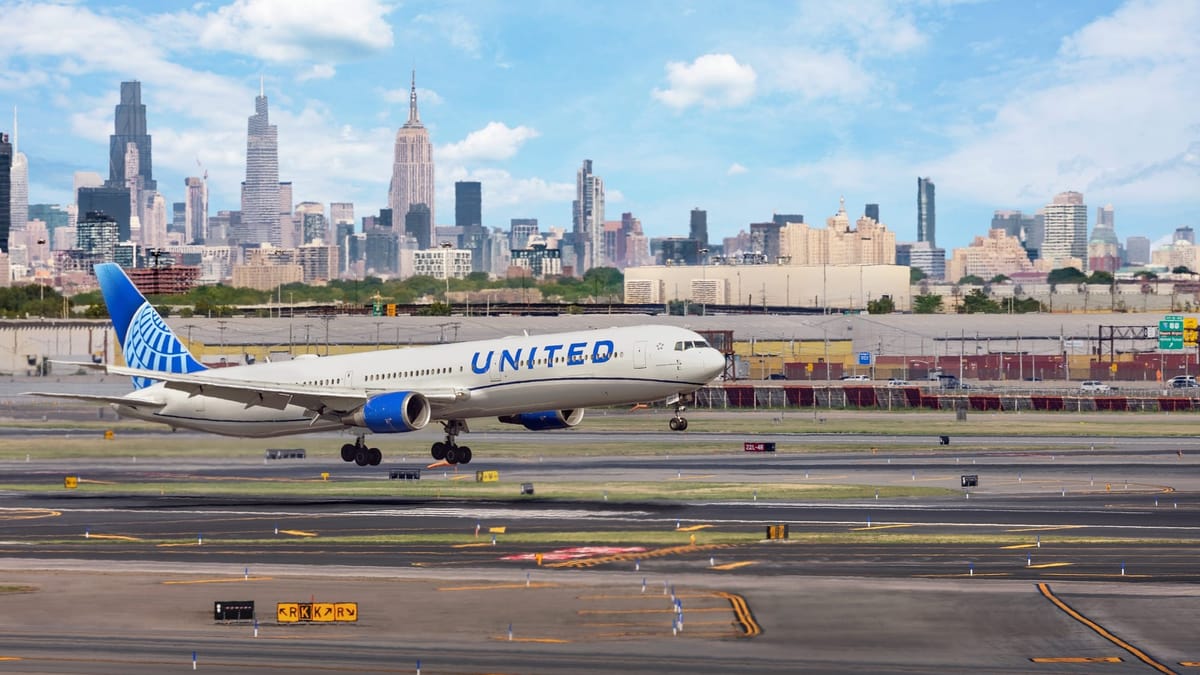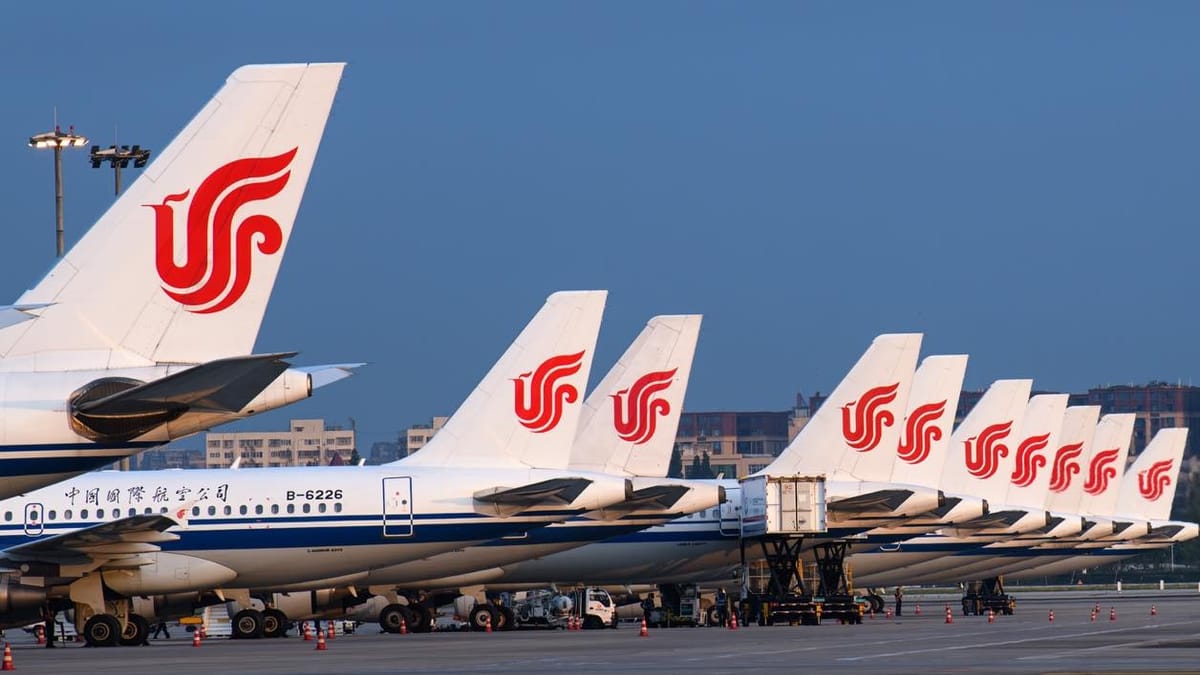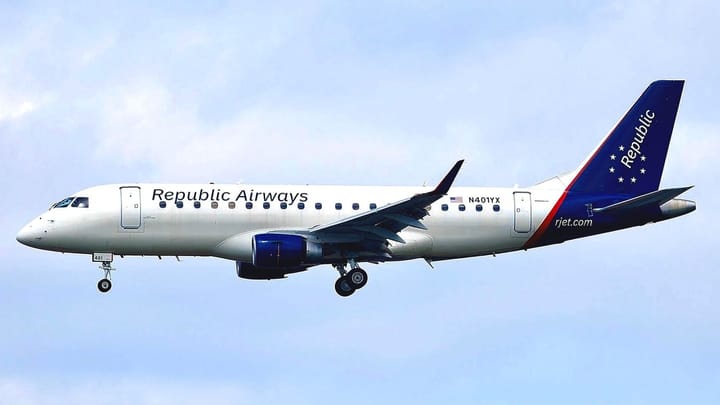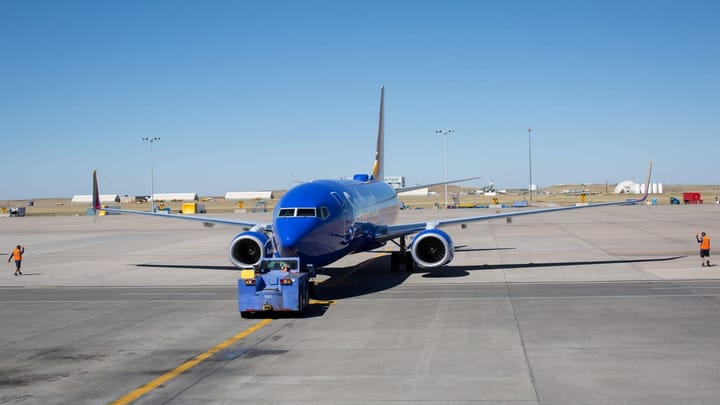United Airlines urges DOT to include Cathay Pacific in Russia overflight ban
Not included in the request? United Airlines' partners Air India or Emirates, which also overfly Russia when flying to the US.

United Airlines has requested the Department of Transportation (DOT) to add Cathay Pacific to the list of airlines that would be prohibited from using Russian airspace when flying to/from the US, stopping short of asking the Department to also add Air India or Middle East carriers, which have also enjoyed utilizing Russian airspace on flights to/from the US, to the list.
Following the DOT’s filing on October 9, 2025, airlines from both sides of the Pacific Ocean, as well as US airline lobby groups, have commented on the Department’s proposal to prohibit Chinese airlines from utilizing Russian airspace on their flights from/to the US.
The order, which, when finalized, would affect up to four itineraries, Air China flights CA 987/988 and CA 769/770 (only the return departure to China), China Eastern Airlines flight MU 587/588, and China Southern Airlines flight CZ699/600, has caused quite a stir.
Air China was the first to reply the next day, pledging the DOT to provide more time than two business days to comment on the proposal, arguing that the order not only has “an unusually short two-business day comment period,” but also that it would adversely affect “a substantial number of passengers in the United States and China who have already made their travel arrangements.”
The DOT denied Air China’s motion on October 14, saying that the competitive disadvantage faced by US airlines means that Chinese airlines are not compliant with the US-China air transport agreement of 1980, and not the Department’s new policies or regulations.

Airlines for America (A4A), a US-based airline lobby group, as well as Delta Air Lines and United Airlines, supported the DOT’s motion. However, while Delta Air Lines said that the DOT “should also consider the use of Russian Airspace to serve the US by carriers of other countries who are similarly enjoying an unfair competitive advantage,” the latter went a step further.
In its filing, United Airlines directly pleaded with the DOT to extend the ban to airlines based in Hong Kong, “where competitive circumstances are the same as China.” The carrier argued that without action against airlines based in Hong Kong, it “would undermine the success of the framework the Department continues to manage to ensure fairness in US-China routes.”
United Airlines highlighted that Hong Kong’s carriers have a market share of around 75% on flights between Hong Kong and the US mainland, “with Cathay Pacific operating an average of five daily flights to three eastern US destinations that, as of now, are unconstrained by Russian airspace restrictions.”
The trio is Boston Logan International Airport (BOS), Chicago O’Hare International Airport (ORD), and New York John F. Kennedy International Airport (JFK).
In contrast, United Airlines is unable to launch flights between its eastern US hubs and Hong Kong International Airport (HKG) since it cannot overfly Russia, limiting its payload.
“To prohibit the use of Russian airspace for Chinese airlines while allowing Hong Kong-based airlines to continue using it is a loophole that needs to be closed.”
The airline estimated that each widebody route results in $56 million in paid salaries in the US annually, adding that it is looking forward to relaunching its flights between Newark International Airport (EWR) and HKG “with a competitive playing field and without airspace limitations.”
In April, United Airlines unveiled two new routes from Los Angeles International Airport (LAX) to Bangkok Suvarnabhumi Airport (BKK) and Ho Chi Minh City Tan Son Nhat International Airport (SGN). Both are extensions of its existing double-daily LAX-HKG itineraries, which stop at the latter before continuing toward BKK and SGN.
Cirium’s Diio Mi showed that in October, Cathay Pacific has scheduled 75 weekly departures from HKG to six destinations in the US. Apart from the aforementioned trio of airports on the East Coast, it also flies to Dallas-Fort Worth International Airport (DFW), LAX, and San Francisco International Airport (SFO).
Flightradar24 flight activity showed that, for example, Cathay Pacific’s HKG to JFK flights, namely CX 830, CX 840, and CX 841, do not cross Russian airspace. The return to HKG itineraries, CX 831, CX 841, and CX 843, do.
The same could be said about its HKG-BOS (CX 812/811) and HKG-ORD (CX 801/806) routes, while the carrier’s HKG to the US West Coast and DFW-bound itineraries do not enter Russia or its airspace.
However, United Airlines did not mention that Air India, for example, also overflies Russia on its itineraries from India to the US, including West Coast airports. To note, Cathay Pacific is part of the oneworld alliance, while both Air India and United Airlines are part of the Star Alliance.
According to Cirium’s Diio Mi, Air India serves four destinations in the US in October: EWR, JFK, ORD, and SFO. Four itineraries have crossed Russian airspace in the past few days, two of which, AI 183/184 and AI 173/174, only do so when flying from SFO to Delhi Indira Gandhi International Airport (DEL).
Flight AI 127/126, before it began stopping at Vienna Airport (VIE), directly flew from DEL to ORD over Russia (AI 127), and two itineraries that stop at Kolkata Subhas Chandra Bose International Airport (CCU), flight AI 175/176 and AI 179/180, which also cross into Russian airspace on their way back to CCU.
Air India is not the only non-Chinese or Hong Kong-based airline to use Russian airspace while flying to the US. Emirates, a United Airlines codeshare partner, and Qatar Airways also fly between their hubs and the West Coast of the US, by overflying the country that invaded Ukraine in February 2022, typically only on US-bound parts of their flights.
At the same time, United Airlines could only be concerned about the level playing field on flights between China and the US due to the specific air transport agreement signed by the two countries. The US has Open Skies Agreements with India, Qatar, and the United Arab Emirates (UAE), which could limit the DOT’s authority to limit those countries’ airlines from overflying Russia while heading toward the US.
After all, the DOT did argue that the agreement between the US and China, signed in September 1980, included language that stipulated that flying “the agreed services by the designated airline(s) on routes over third countries shall be conducted on routes available to the airlines of both Parties, unless otherwise agreed.”
Still, for example, the US and Qatar Open Skies Agreement does include a ‘Fair Competition’ article, which reads that neither country “shall require the filing of schedules, programs for charter flights, or operational plans by airlines of the other Party for approval, except as may be required on a non-discriminatory basis to enforce” uniform conditions for its operators.





Comments ()